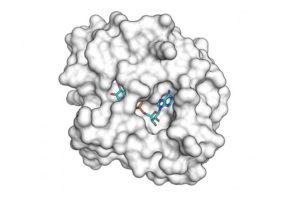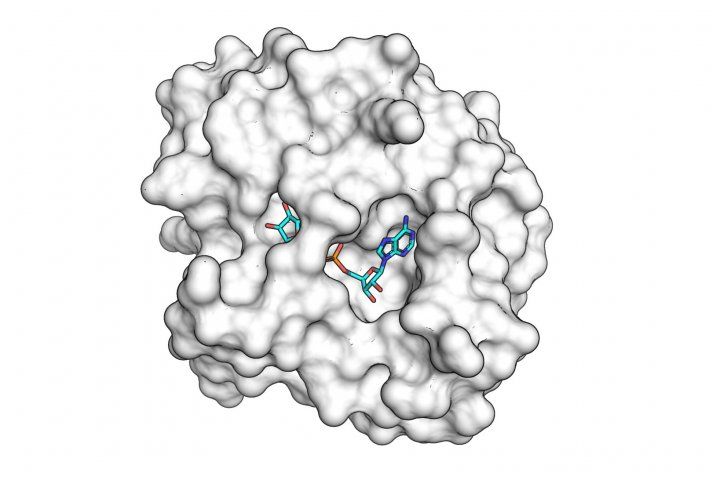Members of the UC San Francisco Quantitative Bioscience Institute Coronavirus Research Group (QCRG), in collaboration with Berkeley Lab and SLAC National Accelerator Laboratory (SLAC), have identified key chemical building blocks for an eventual antiviral drug against SARS-CoV-2, the virus that causes COVID-19. The newly identified compounds bind to an enzyme produced by the virus, called the “macro domain,” which is known to be crucial for the virus’s ability to replicate in human cells. The authors are writing up a formal manuscript describing the results for submission to a peer-reviewed academic journal, but also published their data directly online on July 1 to accelerate global efforts to fight the coronavirus pandemic.
James Fraser, a faculty scientist in Molecular Biophysics and Integrated Bioimaging (MBIB) and an associate professor in the Department of Bioengineering and Therapeutic Sciences at UCSF, led the research effort. The team grew crystals of isolated macro domain proteins, then partnered with the Advanced Light Source (ALS) at Berkeley Lab and the Stanford Synchrotron Radiation Lightsource at SLAC to bombard these crystals with powerful X-rays. The resulting diffraction patterns provided a detailed picture of the macro domain’s atomic structure down to a resolution of nearly one angstrom.
“The data quality was so incredible that, watching remotely, I initially thought the team was shooting a calibration sample,” said James Holton, a faculty scientist in in MBIB who operates a beamline at the ALS.”We almost never see resolution like that from the first ever crystal in a new project. It was truly amazing.”

The SARS-CoV-2 macro domain protein bound to small molecule fragments that could be the basis of novel antiviral drugs.
To identify small molecules capable of binding to the macro domain, the researchers created hundreds of macro domain crystals, then used sound waves to manipulate candidate small molecules into the heart of each crystal and froze them together in liquid nitrogen before returning to the X-ray light sources for further imaging. X-ray diffraction experiments at Berkeley Lab and SLAC revealed 13 small molecules that successfully bound to the macro domain, including four that bound to the enzyme’s active site.
Further work is needed to weld these potential active ingredients into a workable drug candidate, but the research represents a promising new frontier in the battle against the virus, the researchers say, particularly given uncertainties about the timing or ultimate efficacy of an eventual vaccine.
Read more from UCSF.




